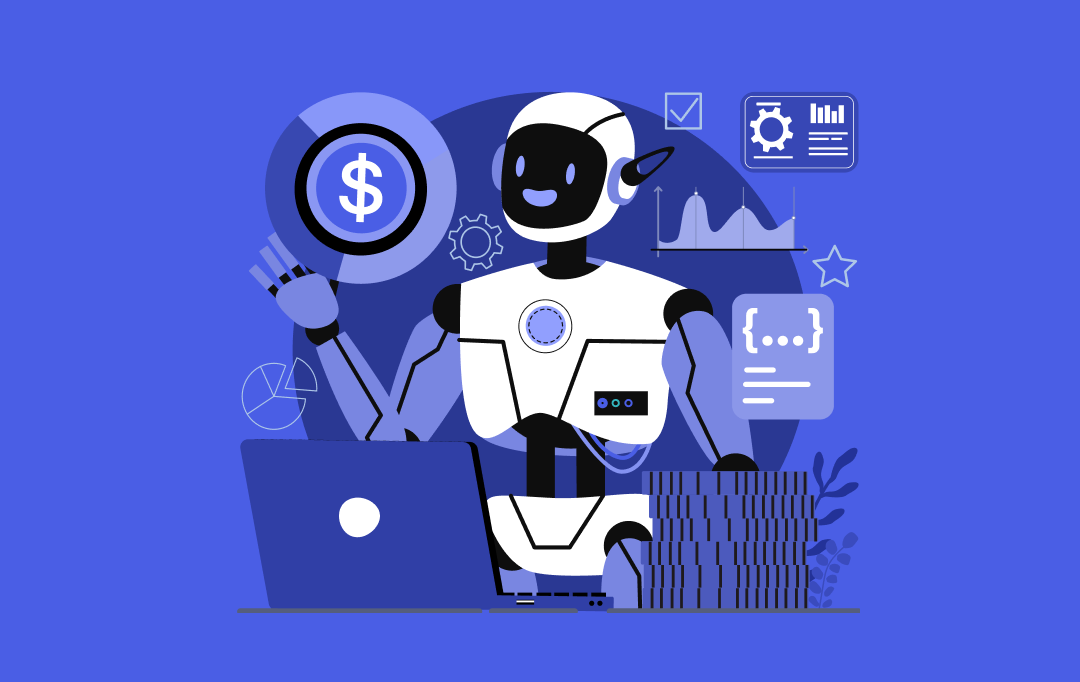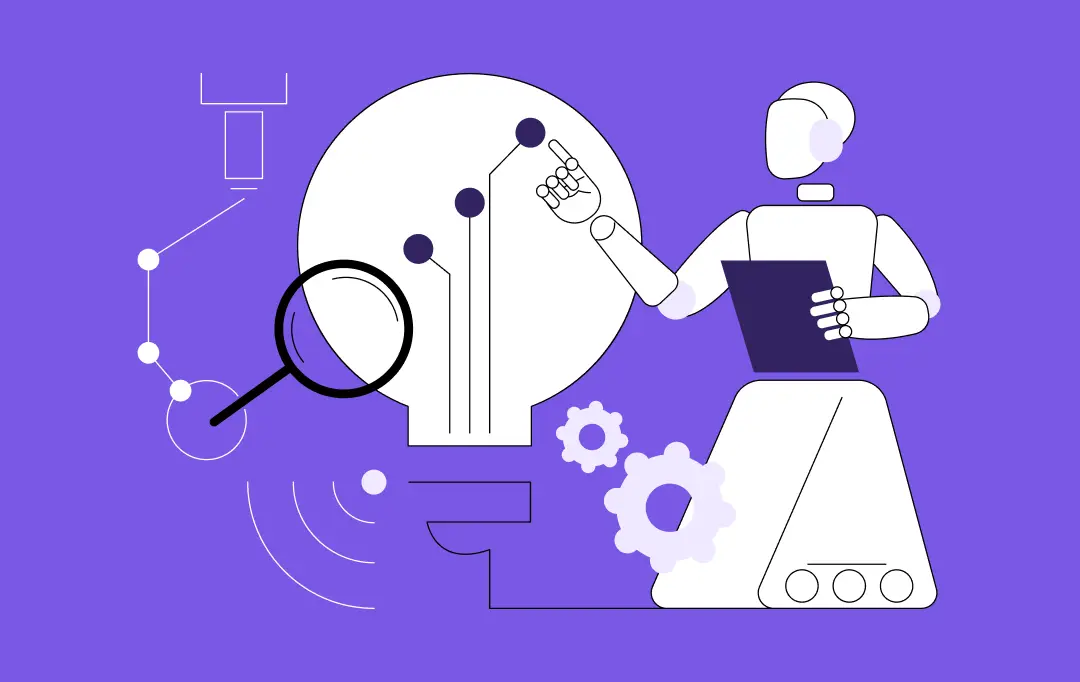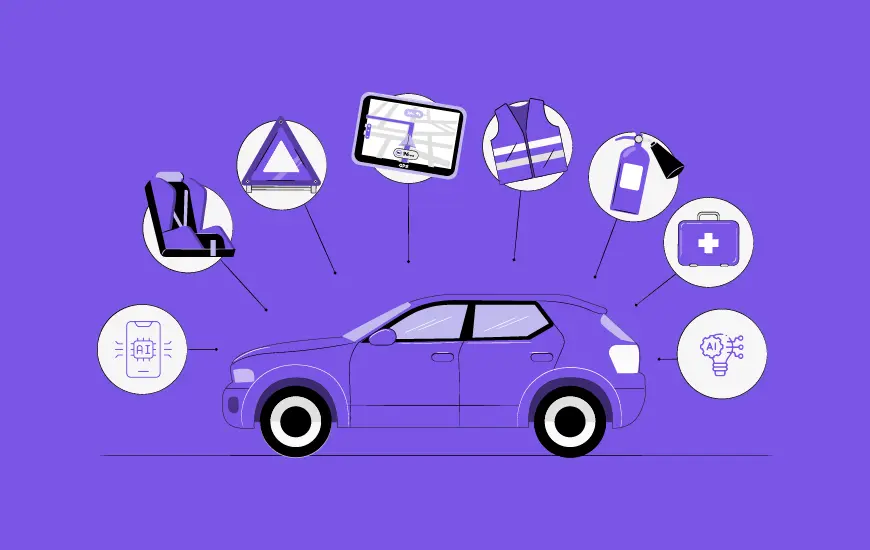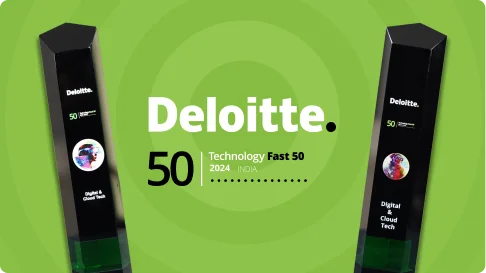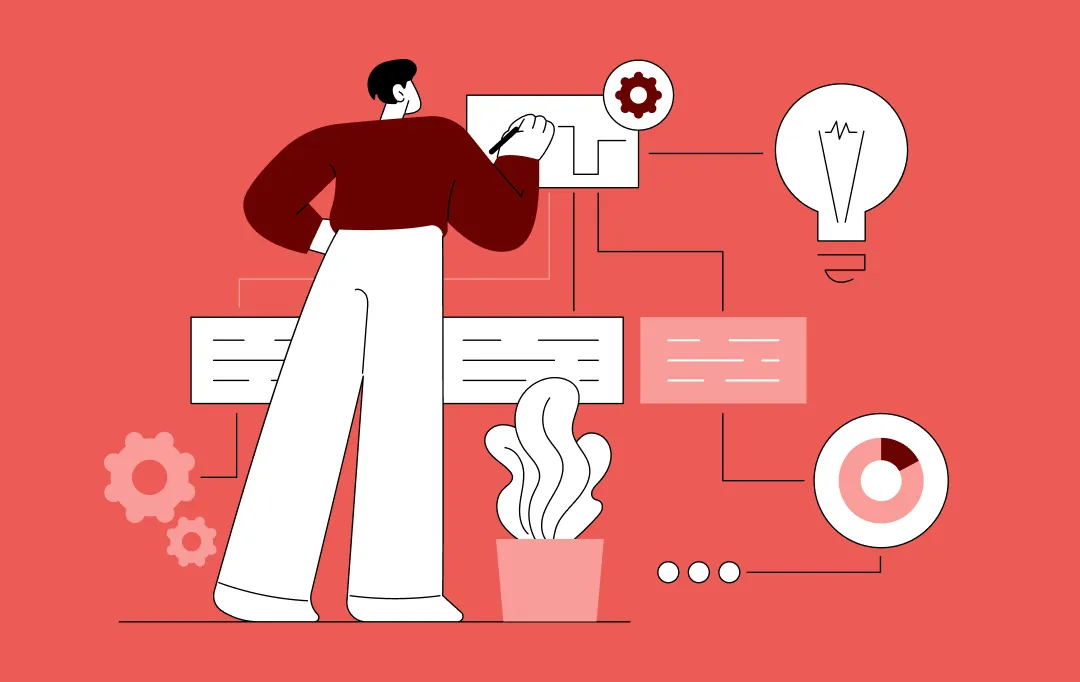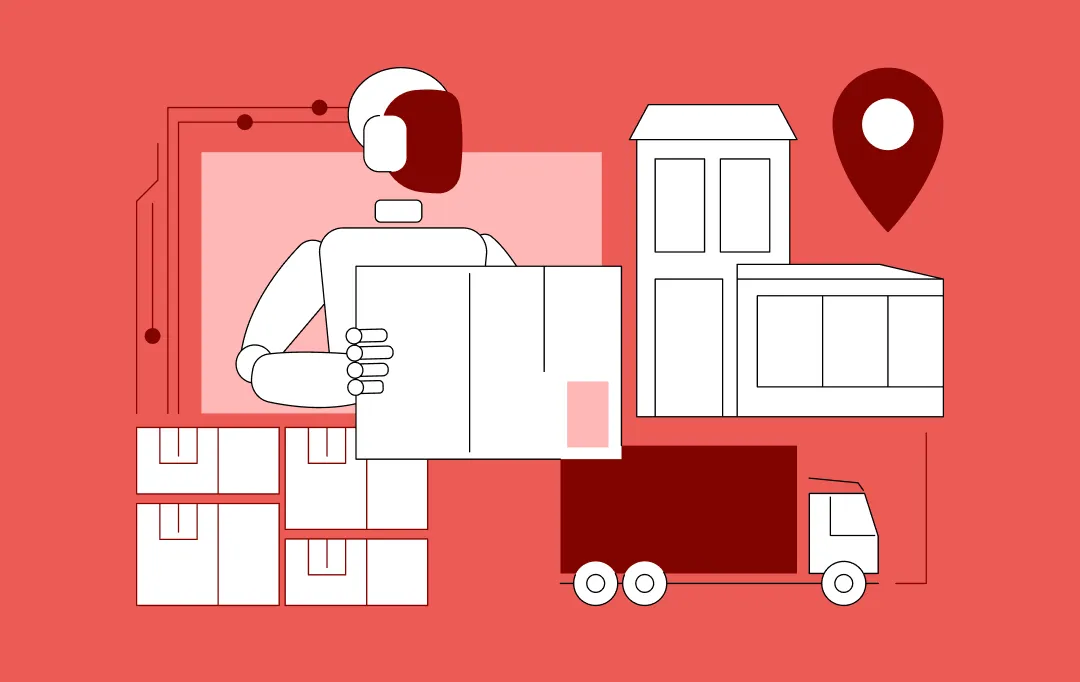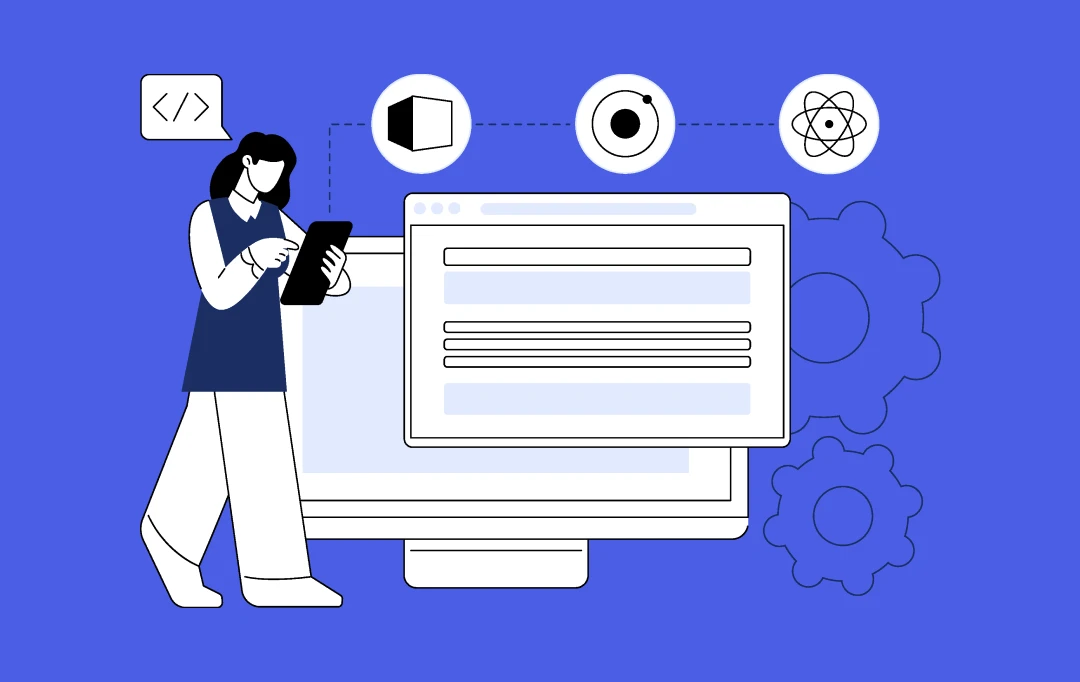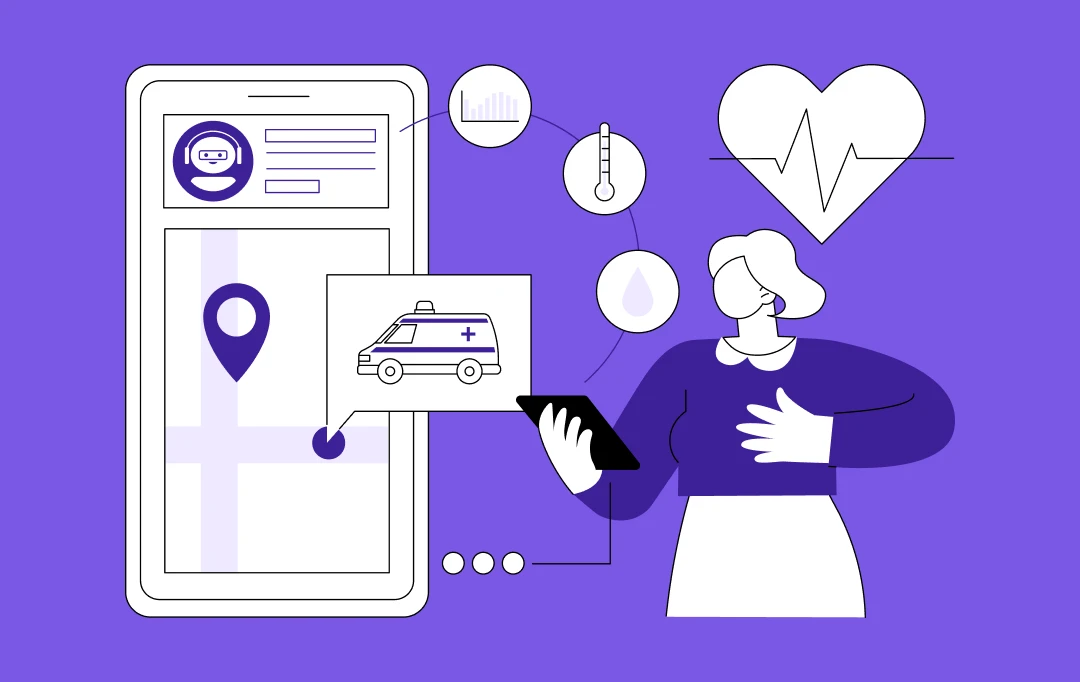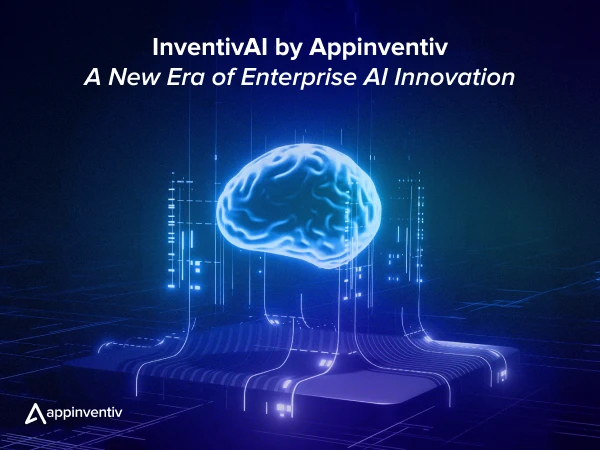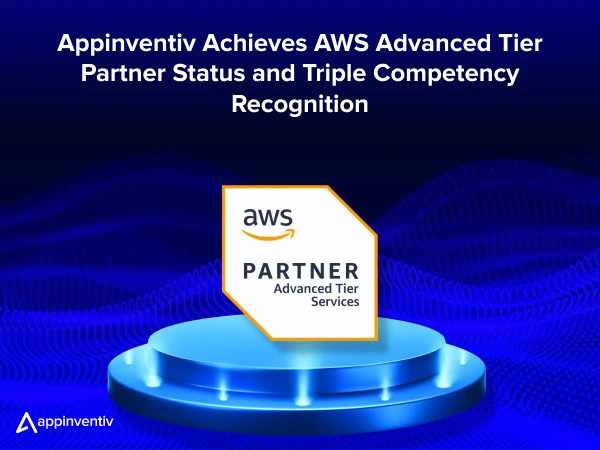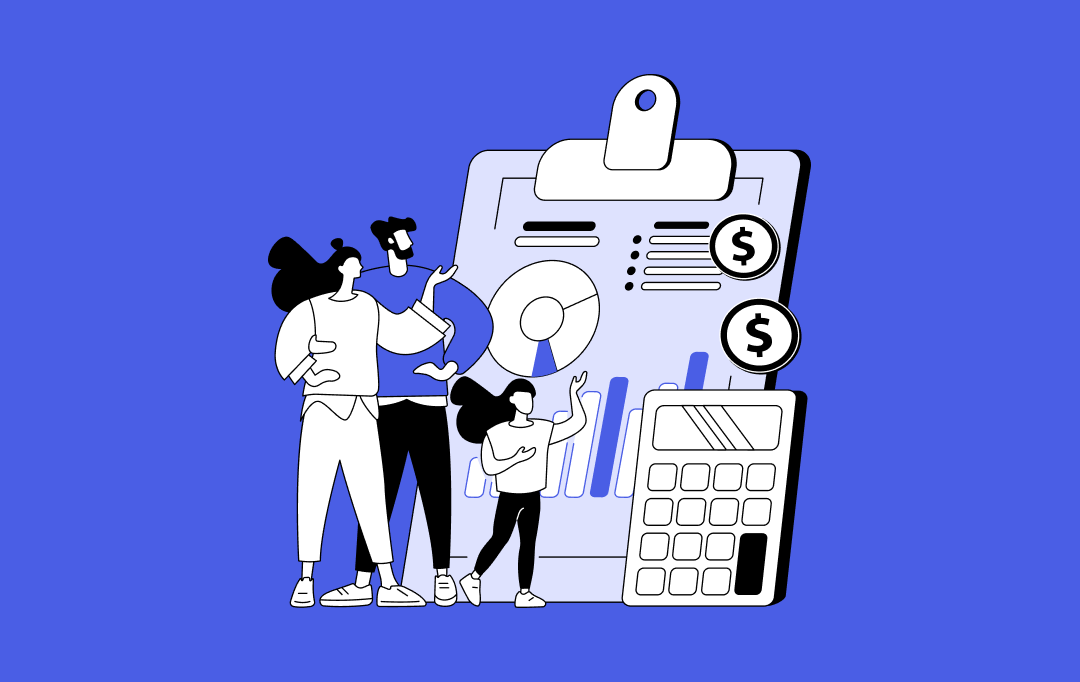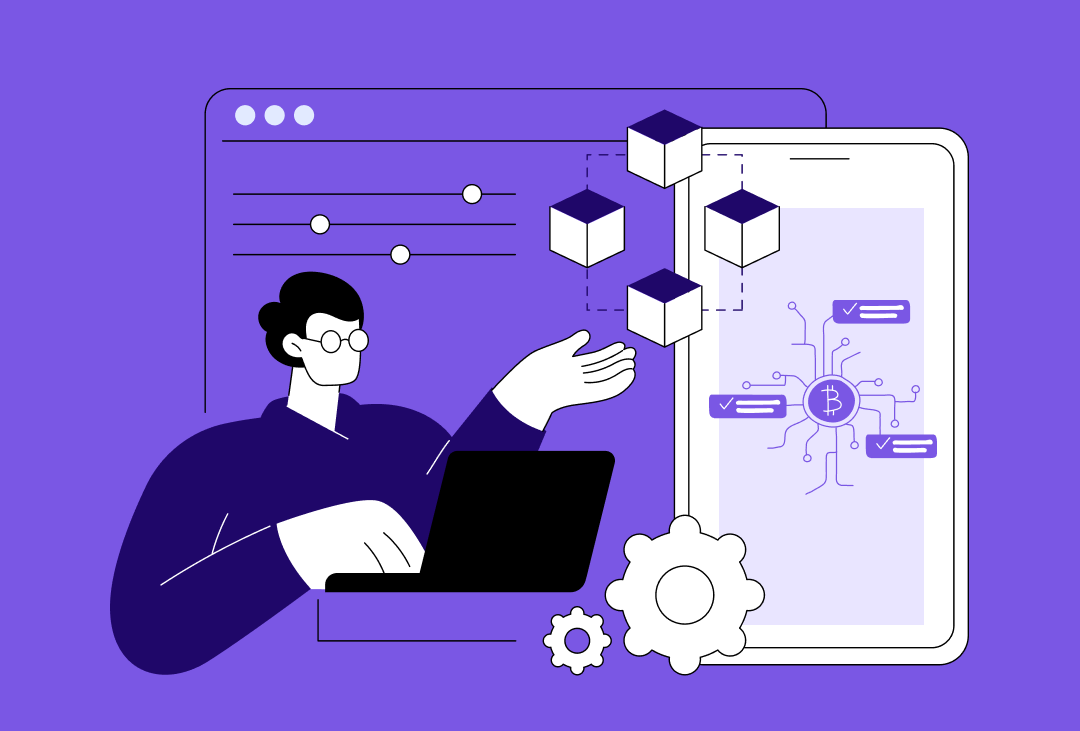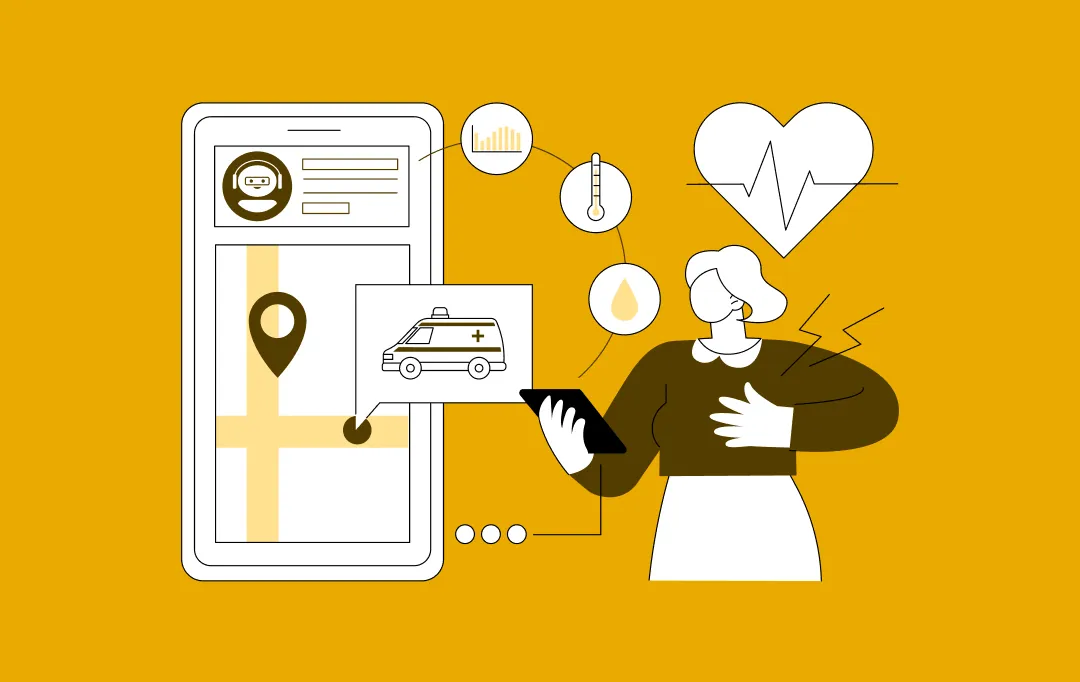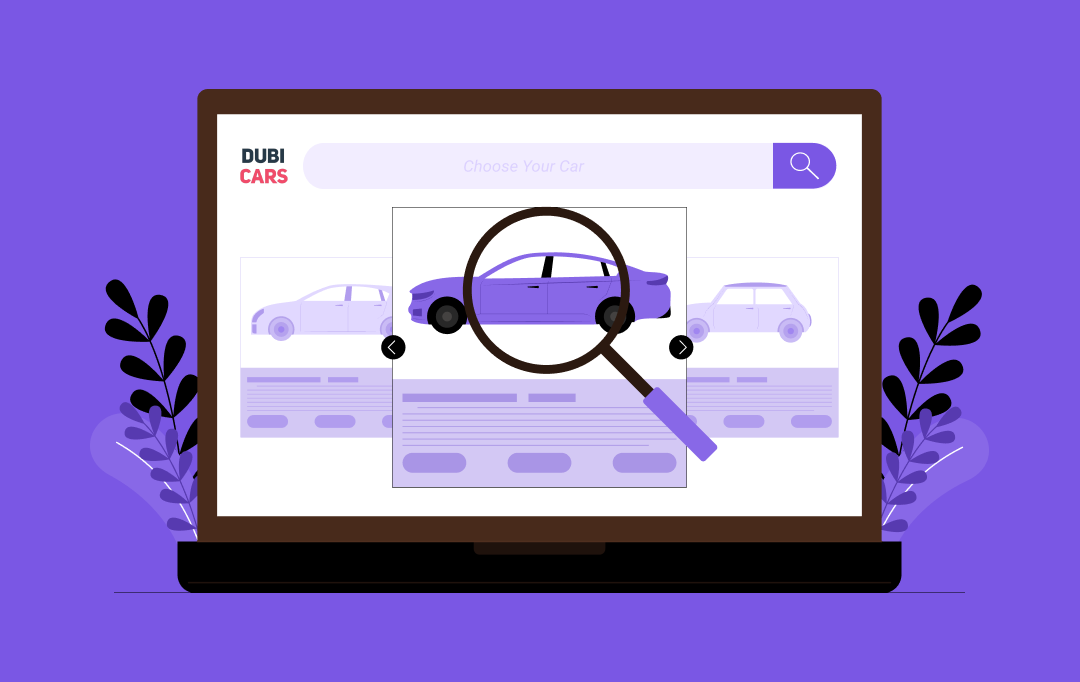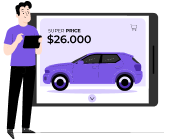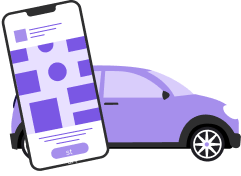- Used Car Market Forecast 2030
- Overview: DubiCars App Marketplace
- What Makes DubiCars Stand Out from Its Competitors
- How Does a Car Marketplace like DubiCars Work? User Journey and Relevance Explained
- How Much Does It Cost to Make an App like DubiCars: Detailed Breakdown on Cost Analysis
- Planning
- Design
- Development
- Launch
- Maintenance
- Factors Affecting the Cost to Build a Car Listing Platform Like Dubicars
- UI/UX Design Complexity
- Backend Development
- Backend Tech Choices
- Third-Party Integrations
- Security and Compliance
- Platform Options
- Modern Tech
- Feature Depth
- Miscellaneous App Development Costs
- Cloud and Hosting Services
- Third-Party APIs and Services
- Analytics
- Ongoing Trend Adoption
- App Store Optimization (ASO) and Marketing Prep
- Ongoing Maintenance
- Server Costs
- Legal and Licensing Fees
- Ways to Optimize Your App’s Development Cost: Initial Strategies
- Developing an MVP
- Cross-Platform Functionality
- Additional Features To Add to Your Car Marketplace App: Gaining a Competitive Edge
- Natural Language Search
- AI-Powered Recommendations
- Image Recognition
- Car Preview using AR
- Understanding the Revenue Model of Apps like DubiCars
- Subscription-Based Model
- Add-Ons - Export Services & Analytics
- Why Partner With Appinventiv Dubai If You Are Looking to Replicate or Make A Better App than DubiCars
The rise of digital platforms has boosted e-commerce to unprecedented levels. The effect of this subject on e-commerce growth has progressively impacted the car-buying experience in the Middle East. Though the traditional way of physically going to the dealer and selecting a vehicle is considered a “norm”, the said “norm” is experiencing a drastic change.
Today, buyers prefer to research their budget bandwidth cars online before visiting a dealership. The research typically involves: Price Comparison, Spec Sheet Check, Features, User Reviews, and financial queries.
According to the Research, 96% of prospective auto buyers in the UAE and Saudi Arabia initiate their purchase journey online, leveraging the Internet to research and explore their new car (Source: Roland Berger).
With this rising surge of car buying and selling online, businesses in the Middle East have started investing in second-hand marketplace apps like Dubicars. Such apps have emerged to ease the online potential car customer journey.
Used Car Market Forecast 2030
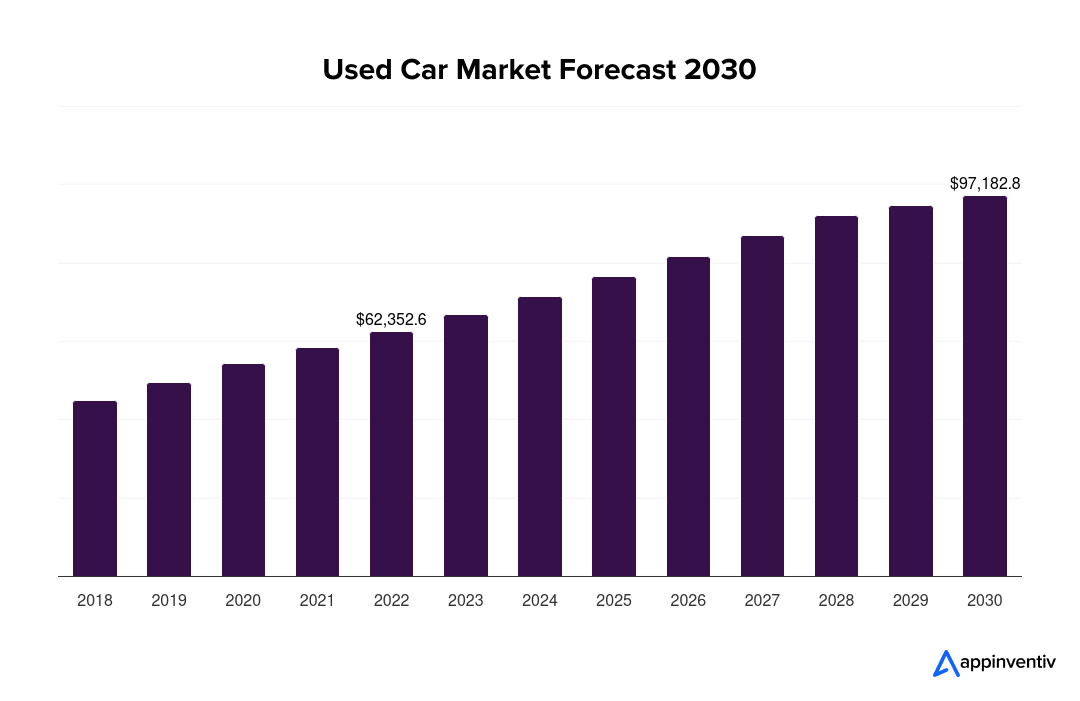
Grand View Research reveals that the used car market in the Middle East and Africa is expected to reach a projected revenue of US$135,971.4 million by 2030. From 2025 to 2030, a compound annual growth rate of 4.9% is anticipated for the market.
DubiCars business model relies on retaining the visitor from the initial online search to the end action of buying it, based on the advantage of varied models available throughout the dealerships. DubiCars provides what customers look for—vehicle history, upfront pricing, photos, etc. This is why more and more business owners often search for probable costs to build a car listing platform like DubiCars.
Thus, the cost to build a car listing platform like Dubicars could range from $30,000 to $200,000 (1,10,192 AED to 7,34,615 AED) and can also exceed $350,000 (12,85,576 AED), subject to the level of customizations preferred.
The cost to build a marketplace mobile app like Dubicar would involve numerous components, including web platforms, mobile apps, an admin dashboard, a backend, continuous maintenance, etc.
Curious about the price of your epic car listing app with top-tier features? Talk to our experts.
Overview: DubiCars App Marketplace
DubiCars stands among the biggest and leading online automotive marketplaces in the UAE region. Their app is more than just a user-friendly interface – it’s a comprehensive platform that provides detailed end-to-end services. Why do we say so? Reasons are listed below:
- Users get to browse through more than 29000 verified listings from trusted dealerships and private sellers (500+ in UAE)
- Provides options for 20 HD photos, 360-degree tours, direct contacts, and detailed specifications
- Offers advanced filtered searches on price, mileage, model, year, and color criteria
- Provides a 240-point inspection, ensuring quality and reliability
- Caters to international buyers through the Export Safe package
For sellers, the app’s MyGarage functionality provides a central place to manage their listings. They can monitor their ads and typically boost them for maximum buyer visibility.
For dealerships, the SaaS-based “Control Auto” tool simplifies effortless listing management and editing, thus providing a centralized hub for efficient business control.
What Makes DubiCars Stand Out from Its Competitors
Established in 2014 and headquartered in Dubai, the company operates on a B2C business model, catering to a wide range of customers. The company distinguishes itself from the competitors through a combination of factors that include, but are not limited to:
- Effective Listing Management: The DubiCars platform offers photo and video services to dealers. This detailed upload of high-quality images and videos of available cars became a forefront feature of the platform, garnering positive reviews from users.
- App-First Approach: The futuristic outlook of the App-First approach proved beneficial for DubiCars. In 2023, the company completely revamped its app design, making it a one-stop shop.
- Their Own SaaS Platform: The company focused on building its platform, Control Auto. Besides simplifying posting, managing, and editing listings on DubiCars, it remains the only SaaS solution in the Middle East dedicated to automotive dealerships, marking a competitive edge in business control.
The app is rated 4.42 out of 5 stars (Android), based on 2 thousand ratings, and 4.5 out of 5 stars (iOS), based on 3 thousand 5 hundred ratings. Therefore, many considerations must be followed if you want to build an app similar to DubiCars.
Below is a detailed breakdown of How Apps like DubiCars work to understand better the initial requirements of their development and the costs involved as per the development methodology.
How Does a Car Marketplace like DubiCars Work? User Journey and Relevance Explained
- User Onboarding and Browse/Search: After the app installation, users can start browsing for available cars from a base of 29,000+ used cars. You can sign up/login (for personalized recommendations) or guest browse immediate listings, while allowing options to select model, price range, vehicle type, model year, kilometers run, etc.
Bonus Read: Guide to Build a Recommendation System
- Comprehensive Car Listings: The user gets detailed car listings, comprising up to 16 high-quality photos, detailed car specifications, and 360° tour seller information.
- Notifications and Purchase Delivery: Per the abovementioned metrics, users can save their favourite listings and be notified when new car listings match their desired preferences. The app extends functionality to arranging inspections, financing, and suitable delivery options. The transaction can be digital or in-person. Thus, while making an app like Dubicars, this functionality integration becomes a mandate.
How Much Does It Cost to Make an App like DubiCars: Detailed Breakdown on Cost Analysis
The costing breakdown is the combination of three stages. Planning, Design, and Development Phase. Consideration of each stage is crucial in planning the overall cost to build a car listing platform like Dubicars. So, if you’re wondering “How long does it take to build a car marketplace app?”, the answer is – it depends on the scope and features of the app. Read below to know more:
| App Complexity | Features Included | Estimated Cost |
|---|---|---|
| Simple | Includes simple listing management, user onboarding, customer support, etc. | $40,000 – $100,000 |
| Moderate | Includes Simple features + Multilingual support, Comprehensive car listing support, integrated payments, enhanced security, HD photo uploads | $100,000 – $200,000 |
| Complex | Includes Moderate features + AI, ML, advanced security, multi-platform integration support | $200,000 – $500,000+ |
Planning
The upfront cost to create an app like DubiCars cannot be single-handedly estimated. The overall estimation depends on the app’s features to consider when building a Car Buy-Sell Platform like Dubicars. Other factors like platform choice (Android, iOS, Cross-Platform), UI/UX design, Prototyping and user Testing, Dashboard integration, etc., are variable costs that vary depending on the project’s scope.
The “Planning Stage” typically involves the project’s market research and sketching out a basic app layout for initial cost estimation. The second aspect of this step is checking the basic functional feasibility to confirm whether features like HD photo uploads and 360° photos can be implemented in the MVP phase.
An estimate of $5,000 to $15,000 (18365 AED – 55,095 AED) is expected in the above process, which remains subject to change depending on the scope of the platform functionality.
Design
UI and UX are crucial aspects of any app development, especially if it’s about automotive marketplace platform development. It should all be about a smooth, satisfying, and intuitive overall experience. The user should be able to easily toggle between price, model, make, year, etc. The potential searches the user performs should be fast, relevant, and displayed clearly without confusion. In addition, the app should have mobile responsiveness, and its design should be consistent across all screen types.
This process is expected to cost $10,000 to $20,000 (36730 AED to 73460 AED).
Development
It is the most core part of the application and, most importantly, the highest technical and costly part of the process. It comes at the biggest and most significant cost to build a marketplace mobile app like DubiCars. Functionalities like user onboarding and sign-up (either through Google or Apple ID) tend to ensure smooth entry into the app. However, like DubiCars, developers/business owners today like to integrate the functionality of Guest User to somehow not force the user to sign up; instead, they get drawn to it naturally.
Advanced search filters and a detailed information breakdown column tend to enrich the user’s experience. Behind the visual cues the website/app provides, a secure backend and admin dashboard are necessary for moderation, analytics, and management. A robust backend infrastructure with reliable servers, APIs, and an optimized database is also required. This infrastructural layer tends to be extremely important as it powers the entire app’s functionality.
The estimated cost of developing a marketplace car listing platform like DubiCars is around $25,000 to $200,000 (91825 AED to 734600 AED).
Launch
Launching your marketplace app involves optimizing the website and app for initial SEO and content setup. This step ensures your to-be-launched app gains online visibility and attracts a significant user base. In parallel, running paid ads on Google Ads and Meta is another considerable expense relevant to driving immediate traffic and app installations. Social media and influencer marketing also come under the same bridge.
This market deployment step costs around $10,000 – $30,000 (36,730 AED—1,10,190 AED), depending on your marketing needs.
Maintenance
This aspect is essential to ensuring long-term performance and market reliability. On the technical front, the app requires continuous frontend and backend support to enhance dynamic support and continuous compatibility with multiple browser versions. Another vital element is ongoing customer support, incorporating real-time chats, email support, etc.
With the growing user base, continuous features must evolve and be developed according to user and market needs. This is a significant but essential investment in efficiently running your app. Depending on the requirements, ongoing maintenance costs range from $10,000 to $20,000 (36,730 AED—73,460 AED) or more.
| Development Phase | Activities | Estimated Cost | Time and Effort |
|---|---|---|---|
| Planning | Market Research, Licensing | $5,000 – $15,000 | 1-2 months |
| Design | UI/UX Design, Prototyping | $10,000 – $20,000 | 2-4 months |
| Development | Coding, Backend, Integration | $25,000 – $200,000 | 4-6 months |
| Launch | Marketing, Deployment | $10,000 – $30,000 | 1-2 months |
| Maintenance | Updates, Server Costs, Customer Support, etc. | $10,000 – $20,000/year | Ongoing, varies annually |
Generally, apps like DubiCars development cost is measured through a formula:
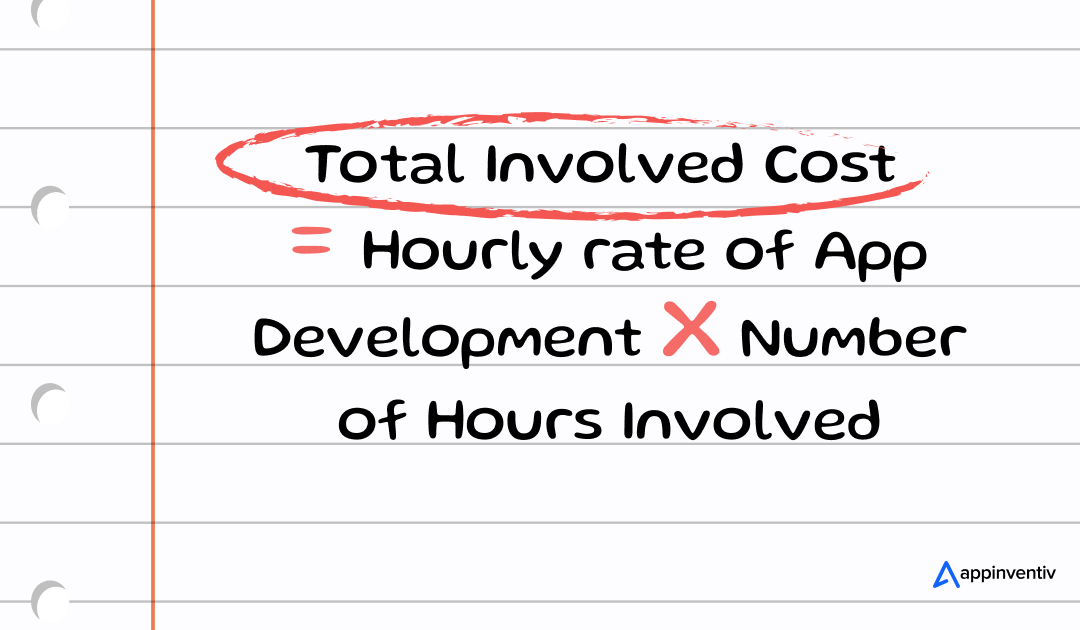
However, due to the app’s complexities and feature-rich requirements, this timeline and cost usually vary depending on the number of iterations and methodology followed. Partnering with reputable firms is generally suggested in such app developments. Why?
- Firstly, the complexities are evenly distributed between the respective departments, ensuring each phase is developed in parallel and with constant functionality integration. While a single freelancer would build the steps from 1 to 10, combining Agile and DevOps methodology, followed by mobile app development companies, would streamline the entire development process, thus improving delivery timelines.
- Secondly, the robust use of solid infrastructural tools, better platform selection (cross-platform frameworks preferably), compliance measures, better visual design, and security firewalls used by reputed app development companies are the second-most important reasons to consider a reputed and established firm.
The mix of both results in a robust backend infrastructure website with top-quality inclusion of servers, APIs, and databases.
Factors Affecting the Cost to Build a Car Listing Platform Like Dubicars
To create a realistic budget and plan resources well, you must understand the factors influencing the cost of building a car buy-sell app similar to Dubicars. These factors shape the platform’s complexity, how long it will take to make, and how much money you’ll need to invest. Below, we’ll look at the main factors that play a role in creating an app for car sellers and dealers like Dubicars.
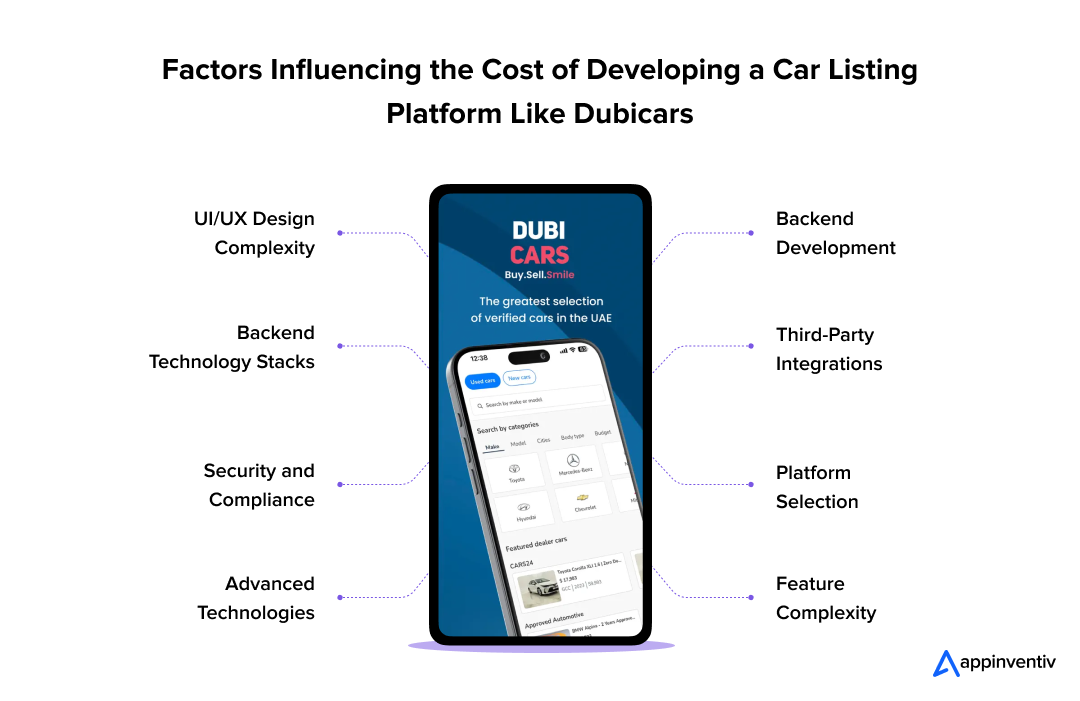
UI/UX Design Complexity
Building the user interface and experience is important in keeping people on a car listing website. A clean and appealing design leads users to spend more time exploring and interacting with the site and increases development expenses. Simple templates cost less, while adding animations, unique visuals, or interactive elements requires more expertise and effort.
| Design Aspects | Description | Examples | Cost Impact |
|---|---|---|---|
| Basic | Minimal layouts, standard components | Simple grid-based car listings | Low ($5,000–$10,000) |
| Moderate | Custom visuals, subtle animations | Interactive filters, themed UI | Medium ($10,000–$20,000) |
| Complex | High-end visuals, interactive features | 3D car previews, custom animations | High ($20,000–$50,000+) |
| Testing Iterations | Usability testing, design refinements | A/B testing on search layouts | Adds $2,000–$5,000 |
Backend Development
The backend serves as the backbone of a car listing website. It manages tasks like handling data, creating user profiles, running search functions, and providing real-time updates. Platforms like Dubicars need a strong backend to manage large databases and handle heavy user traffic. Costs vary based on how advanced, scalable, and customized the backend system has to be.
| Components | Descriptions | Examples | Cost Impact |
|---|---|---|---|
| Basic Backend | Simple database, limited API calls | Static car listings | Low ($10,000–$20,000) |
| Scalable Backend | Cloud-based, moderate API integration | Real-time price updates | Medium ($20,000–$40,000) |
| Custom Backend | High-traffic support, complex logic | Advanced search + user management | High ($40,000–$80,000+) |
| Maintenance | Ongoing server and database support | Monthly updates, bug fixes | $1,000–$5,000/month |
Bonus Read: A Quick Guide on Mobile App Backend Development
Backend Tech Choices
The backend technology you pick decides how you can build the platform, how well it can handle growth, and how much money it will take. To create something like Dubicars, you must balance performance and cost by combining custom builds or ready-made options.
| Backend Tech Stack | Description | Examples | Cost Impact |
|---|---|---|---|
| Off-the-Shelf | Pre-built frameworks, quick setup | Firebase, AWS Amplify | Low ($5,000–$15,000) |
| Open-Source Stack | Customizable, community-supported | Node.js + PostgreSQL | Medium ($15,000–$30,000) |
| Enterprise Solution | High-performance, proprietary systems | AWS, Azure with custom setup | High ($30,000–$60,000+) |
| DevOps Setup | CI/CD pipelines, automated scaling | Docker, Kubernetes | $10,000–$25,000 |
Third-Party Integrations
Adding tools like payment systems, map services, or vehicle data providers adds features to the platform. Dubicars uses this kind of setup. However, these tools come with setup work and licensing costs.
| Integration Types | Purpose | Examples | Cost Impact |
|---|---|---|---|
| Vehicle Data APIs | Access to car specs and pricing | Edmunds, AutoData | $5,000–$15,000 |
| Secure Payment Gateways | Secure transaction processing | Stripe, PayPal | $3,000–$10,000 |
| Mapping Tools | Location-based dealership info | Google Maps | $5,000–$15,000 |
| Communication APIs | User notifications, inquiries | Twilio, SendGrid | $2,000–$5,000 |
Security and Compliance
Strong security protects user data and helps build trust on car listing platforms. Following rules like GDPR or CCPA is a legal necessity. Basic security measures are affordable, but higher-level protections and compliance checks increase costs.
Bonus Read: How to Develop a GDPR-Compliant Software for Your Business?
| Elements | Descriptions | Examples | Cost Impact |
|---|---|---|---|
| Basic Security | SSL, basic encryption | Password protection | Low ($2,000–$5,000) |
| Advanced Security | Biometrics, end-to-end encryption | Secure payment processing | Medium ($5,000–$15,000) |
| Compliance | GDPR, CCPA, or local laws | Data privacy audits | $5,000–$20,000 |
| Penetration Testing | Vulnerability checks | Simulated cyberattacks | $3,000–$10,000 |
Platform Options
Choosing between web, iOS, Android, or a combination impacts overall expenses. A platform like Dubicars must support multiple platforms to reach more users, making development and testing pricier.
| Platforms | Description | Examples | Cost Impact |
|---|---|---|---|
| Web Platform | Browser-based platform | Responsive web app | Low ($20,000–$40,000) |
| Cross-Platform | Unified codebase for iOS + Android | React Native-based app | Medium ($30,000–$60,000) |
| Native | Separate apps for iOS + Android | Native iOS + Android builds | High ($50,000–$100,000+) |
| Testing | Platform-specific bug fixes | Device compatibility testing | $5,000–$15,000 |
Modern Tech
AI, AR, or ML tools can help a car listing platform stand out, but they require expert skills and come with higher costs. Features like AI-based recommendations could improve user experience and make platforms like Dubicars more engaging.
| Technologies | Purpose | Examples | Cost Impact |
|---|---|---|---|
| Augmented Reality | Interactive car visualization | AR car previews | $20,000–$50,000 |
| Artificial Intelligence | Predictive pricing, user behavior | AI-driven car suggestions | $15,000–$40,000 |
| Machine Learning | Personalized recommendations | Price trend analysis | $20,000–$60,000 |
| R&D | Prototyping and testing | AR feature development | $5,000–$15,000 |
Feature Depth
The features and level of detail determine how a platform operates. Dubicars provides simple listings and tools like comparison features and price calculators. Prices increase when the tools get more advanced and detailed.
| Feature Types | Descriptions | Examples | Cost Impact |
|---|---|---|---|
| Basic | Static content, basic navigation | Car listings, search filters | Low ($5,000–$15,000) |
| Moderate | Real-time updates, user profiles | Price alerts, saved searches | Medium ($15,000–$30,000) |
| Complex | Financing tools, comparison features | Loan calculators, multi-car compare | High ($30,000–$70,000+) |
| Customization | Tailored user experiences | Personalized car recommendations | $10,000–$25,000 |
Miscellaneous App Development Costs
During your app development phase, it’s easy to forget about the other expenses that are part of the entire development process. Post launch support, customer support, robust cloud infrastructure, etc. are essential costs that are often looked away from the actual app development costs.
Like Benjamin Franklin said,
“The bitterness of poor quality remains long after the sweetness of low price is forgotten.”
It can be well understood that just building an app is not the objective, but enhancing user experience on every level surely is.
While frontend and backend development eat up a significant portion of the actual cost, factors such as hosting services, third-party API integrations, analytics, etc, are necessary investments. It saves your app from reputational or legal damage that comes when your app isn’t suited to legal and technical formalities. Read more to gain some insights.
Cloud and Hosting Services
Apps like Dubicars development cost also includes Cloud and Hosting Services. These are recurring but essential app development costs. These services keep your app live online and ensure the data loads easily and quickly. In between come the bandwidth costs incurred every time users stream media or download it, due to the consumption of network resources.
- Basic Cloud Hosting: $50–$300/month
- Scalable Infrastructure: $500–$3,000/month
- Data Storage: $100–$600/month
- Content Delivery Network (CDN): $100–$500/month
Third-Party APIs and Services
Third-party API integration replicates a skilled diplomat, enabling different software products to understand and work with each other. For example, some food delivery apps use Google Places API or Google Maps API to detect and fill addresses based on address suggestions typed in by the user or location tracking. Other examples include WhatsApp Business API for direct messaging to customers/users, Email services API for sending automated notifications, and Payment Gateway APIs.
Estimating API integration for apps like DubiCars development cost:
- API Subscriptions: $100–$2,000/month
- Usage-Based Fees: $0.01–$0.50/request
- Premium Features: $500–$5,000/year
Analytics
Analytics tools are one significant expense in the overall cost of building a car buy-sell app similar to Dubicars. Analytics are essential integration steps in maintaining a high-quality and reliable app. This aspect falls into a broader category of analytics and error monitoring. The basics of mobile app analytics cover user action tracking (better for understanding user behavior on the app, app performance, and user experience to optimize the app’s overall success.
User Behavior Data records clicks, taps, swipes, and potential interactions with specific features. Analytics also includes device and technical data, which offers information on devices, app versions, and OSs to address compatibility issues. Here is a detailed explanation of which analytics tools are best for your apps and their core genre.
- Basic Analytics Tools: $50–$200/month
- Advanced Reporting: $500–$2,000/month
- Setup and Integration: $1,000–$5,000
Ongoing Trend Adoption
To stay competitive, apps must adopt emerging technologies and trends like AI, AR/VR trends, or blockchain. For instance, a fitness app might add AI-driven workout plans or AR for virtual coaching. These updates require research, development, and specialist expertise, making trend adoption a continuous investment to meet user expectations.
- Trend Research: $2,000–$6,000/year
- Feature Development: $10,000–$40,000/update
- Specialist Hiring: $60–$120/hour
App Store Optimization (ASO) and Marketing Prep
App store visitors require strategic ASO, including keyword optimization, A/B testing, and high-quality visuals. Pre-launch marketing, such as social media campaigns or influencer partnerships, builds buzz but adds to costs. These efforts are vital for standing out in crowded app stores but are often under-budgeted.
- ASO Tools: $100–$600/month
- Visual Assets: $2,000–$6,000
- Marketing Campaigns: $5,000–$20,000
Ongoing Maintenance
Apps require regular updates to fix bugs, improve performance, and ensure compatibility with new OS versions. Maintenance also includes security patches and feature enhancements to retain users. These ongoing costs are essential for a seamless user experience and compliance with platform standards.
- Performance Monitoring: $50–$250/month
- Bug Fixes: $1,000–$6,000/issue
- OS Updates: $5,000–$12,000/update
- Feature Enhancements: $2,000–$8,000/feature
Server Costs
Servers power app functionality, from user authentication to real-time data processing. Costs depend on traffic, storage, and scalability needs. High-traffic apps, like streaming or gaming platforms, face steep expenses during usage spikes. Proper server management is crucial but often underestimated.
- Basic Server Hosting: $50–$250/month
- Scalable Servers: $500–$3,000/month
- High-Traffic Support: $2,000–$12,000/month
- Database Management: $100–$600/month
Legal and Licensing Fees
Apps must comply with regional regulations like GDPR or CCPA and secure licenses for third-party tools. Legal fees include drafting terms of service and privacy policies and ensuring compliance with data protection laws. Licensing costs for APIs or software add up, impacting global app budgets.
For example, compliance-driven security, such as the UAE’s PDPL, must now be complied with. In addition, integrating Cloud Security Services has now become the norm. Thus, the overall cost to build a car listing platform like DubiCars depends on the flexibility of the features and tool integration a business owner is looking for.
- API Licenses: $500–$3,000/month
- Legal Compliance: $2,000–$12,000
- License Renewals: $1,000–$4,000/year
Elevate your vision with our tailored, cutting-edge app solutions.
Ways to Optimize Your App’s Development Cost: Initial Strategies
One of the critical things to consider while planning your app development cost is effective management. Costs can quickly escalate during the full development phase due to inefficient workflows or feature creep. However, some strategic ways to optimize the overall development cost of your app can help you scale while steadily managing your development costs. Read more to know about possible strategies you can apply for the app’s development cost management:
Developing an MVP
An MVP is the app’s initial version with enough market deployment features to make it work for the public. An MVP app includes enough features to attract early adopters/customers and validate the idea. An MVP app replicating DubiCars can have the following features to get it launched in the market:
- User Registration and Login
- Car Listing and Features, including Make, Model, Mileage, Price, etc.
- Car Listing Features for Sellers
- A Basic but Responsive UI
But isn’t an MVP the same as a prototype? The prototype or prototype stage is one stage before the MVP, which is always released after the prototyping stage. While a prototype app replicates the product functionality, it is not usually live. On the contrary, the purpose of an MVP is to confirm and validate the app’s idea using user feedback.
Cross-Platform Functionality
Though the approximate cost of building a car buy-sell app similar to DubiCars has been discussed above, the functionality of a cross-platform or multi-platform app helps it run smoothly on most operating systems. This helps both programmers and business owners.
- Firstly, it saves budget and increases ROI. The overall costs in such implementations reduce the cost for services like quality testing, ongoing support, and deployment.
- The second benefit is the faster turnaround time. Because only a cross-platform app is to be developed, this significantly reduces the app delivery time. The sooner the app is developed and deployed, the sooner the business gets back on track.
Additional Features To Add to Your Car Marketplace App: Gaining a Competitive Edge
Today’s fast-paced market does not allow you to launch your car marketplace app and let the community build itself. Users long for more than just basic car listing and dealer communication. To make the app stand out, you must go beyond features that competitors are already using. From AI-powered recommendations to incorporating AR, look at the potential features you can add to your car marketplace app.
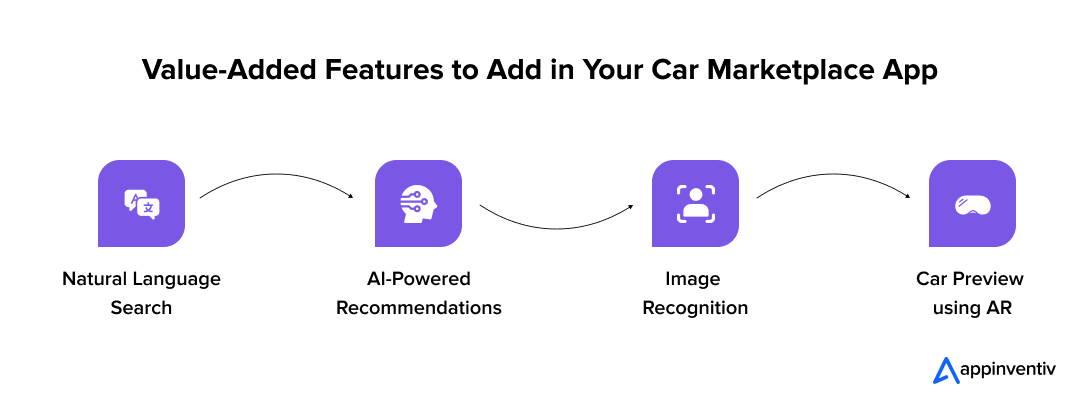
Natural Language Search
Integrating the search functionality with the Natural Language Search feature can be incredibly useful because of its core, intuitive, and easy-to-use functionality. With Natural Language Processing (NLP), manually entering the car’s Make and Model query is unnecessary. A simple English language search, or a search in your native language, can give the same output.
For example, with NLP, you can type in “Sedan under 50,000 AED with sunroof in Dubai” and get the potential available listings near you. Because search has come a long way since the inception of Google Search, why not make it a default feature in your App to outperform an already existing app like DubiCars?
AI-Powered Recommendations
Including machine learning in recommendations can be a significant addition to your app. This means that users can go to your app, and based on the search results and location preferences, they can automatically get potential nearby listings that are favourable to them.
Such recommendations deliver more accurate search results by sifting through vast amounts of data to find the most relevant information, making the search process more efficient. Progressive business owners are embracing this transformative technology to improve search utilization, increase their conversion rate, and increase site revenue per visit.
Image Recognition
Including an Image Recognition feature in your To-Be-App can transform your user experience, especially from the seller’s perspective. Usually, the user uploads an image and enters credentials like Make, Model, etc.
With the Image Recognition feature, uploading a simple image of the car, followed by a close-up photo of the dashboard, would automatically enter the Model and Make of the particular vehicle, followed by the number of kilometers on the odometer (dashboard image recognition). This would improve the user journey on the app, thereby improving word-of-mouth.
Car Preview using AR
There is no better experience for a potential buyer than viewing a potential car on their driveway and experiencing it firsthand. Integrating such AR functionality would level up the quality of your app. They can walk around and check it from different angles, even giving them an inside look at the potential car for an enhanced experience. This feature tends to be highly useful for new car buyers and dealerships showcasing premium models.
Understanding the Revenue Model of Apps like DubiCars
Understanding the Dubicars revenue model is crucial for aspiring entrepreneurs looking to develop similar platforms. If you want to build an app similar to Dubicars, consider employing a multifaceted revenue strategy that ensures profitability while delivering user value.
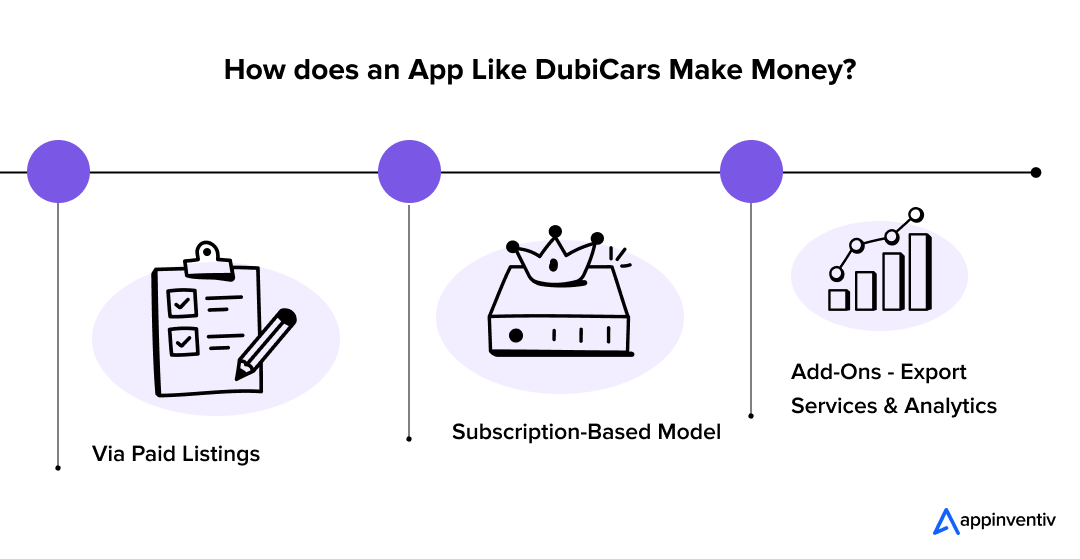 Via Paid Listings
Via Paid Listings
In Paid Listings, dealers or private sellers pay to post vehicles on their platform. This is the most basic pricing strategy that such revenue models utilize. Further, these listings can be topped with more options, like featured listings for more revenue from the sellers. The sellers benefit by having their listings featured as premium.
Subscription-Based Model
The subscription-based model is the second way these apps leverage revenue. Dealerships pay either monthly, quarterly, or annual fees to access bulk listing uploads. These fees also include benefits like lead management tools, detailed analytics, etc. Dealerships tend to keep this pay continuous as it proves highly beneficial in providing consistent revenue, incentivizing long-term revenue.
Add-Ons – Export Services & Analytics
Export Services are another revenue-generating area. The company taps into commission-based models, especially via vehicle exports. It facilitates international transactions and charges for logistics and escrow services.
In addition, the app’s data analytics services come in handy. Due to a large database of customers, their in-app behavior, and car model availability, their analytics services are beneficial in offering anonymized insights to market research firms for detailed insights and various automakers to leverage the information to improve their vehicles. Therefore, this diversified revenue model becomes a norm for similar apps to replicate such a full-fledged automotive marketplace.
Why Partner With Appinventiv Dubai If You Are Looking to Replicate or Make A Better App than DubiCars
Founded in 2015, Appinventiv Dubai has built a solid reputation as a leading app development company. Our client-centric approach has proved beneficial in the long run, establishing groundbreaking norms in the quality of services that we provide. Our client testimonials are surely a green flag for anyone looking to partner with the best automotive marketplace mobile app developers in Dubai.
Throughout our decade, we have worked with startups, enterprises, and Fortune 500 brands like Hukoomi, Empire App, KFC, IKEA, Dominos, Adidas, and others. You can also check out the portfolio section to get a glimpse of the type of projects we have worked on.
We also offer end-to-end product development services, tailored to today’s tech landscape. From intuitive UI/UX design to cloud deployment and backend architecture, we craft experiences that engage and retain users in your business. Feel free to contact us and discuss your business needs.
FAQs
Q. How Do I Validate the Idea of My To-Be-App Before Its Full-Scale Development?
A. Developing an MVP is the best way to validate the idea and ensure the fair execution of your app before making it a full-fledged, feature-rich platform. Building an MVP helps you understand how the user is interacting with the app and what improvements the app needs to iterate on before it goes live on the marketplace. User feedback is collected during the MVP stage to understand previously identified roadblocks and is further worked upon to improve the app.
Q. Is it best to make the app suitable for iOS or Android?
A. In the current market, the most suited strategy is cross-platform functionality. Especially in a diverse market like the Middle East, where the ecosystem is a fair mix of iOS and Android platforms, targeting cross-platform functionality is usually considered the best approach. Either a framework like Flutter or React Native is the best to target both genres of audiences.
Q. What is the process of creating an app for car sellers and dealers like Dubicars?
A. To build an app like Dubicars, you must follow a structured process that balances user needs, technical feasibility, and business goals. Below is a comprehensive guide to developing such an app:
- Market Research: Analyze competitors like Dubicars and identify target audience needs.
- Define Features: List core functionalities (e.g., car listings, search filters, dealer profiles).
- Choose Platform: Decide on iOS, Android, or cross-platform development.
- Design UI/UX: Create intuitive wireframes and user-friendly interface designs.
- Select Tech Stack: Pick frameworks (e.g., React Native, Flutter) and backend (e.g., Node.js, Firebase).
- Develop Backend: Build APIs, database, and server for data management.
- Develop Frontend: Code the app’s interface and integrate with backend APIs.
- Implement Features: Add listing creation, search, messaging, and payment systems.
- Ensure Security: Incorporate authentication, encryption, and data privacy measures.
- Test App: Conduct unit, integration, and user acceptance testing.
- Launch Beta: Release a beta version for feedback from select users.
- Maintain & Update: Monitor performance, fix issues, and add new features.
Q. What are the Benefits of the Car listing platform development?
A. Developing a car listing platform like DubiCars offers numerous benefits for entrepreneurs, businesses, and users in the automotive industry. Below are the key advantages:
- Revenue Generation Opportunities
- Market Reach and Accessibility
- Enhanced User Experience
- Automation and Efficiency
- Data-Driven Insights
- Competitive Advantage
- Support for Dealers and Individuals
- Scalability and Customization
- Brand Building and Trust
- Environmental and Economic Impact
Q. What Legal Compliances are Important to Consider in my To-Be-App like DubiCars?
A. Data privacy laws, equivalent to the UAE’s PDPL (Personal Data Protection Law) and Saudi Arabia’s PDPL, must be followed. These laws tend to require very clear consent for data collection and processing and provide users with the right to access and delete any required information. In addition, if any platform is serving users across the border, then compliance with multiple jurisdictions may be necessary.
Q. How long does it take to build a car marketplace app?
A. The exact time depends on the scope and complexity variations of your app. However, starting with an MVP, it takes around 4-5 months of extensive work. It is followed by 6-7 months for a mid-level app, with functionalities and backend development extended to support a significantly large user base. However, a full-enterprise app could take 9-12+ months to complete due to Reports, Real-Time Analytics, etc.
Q. How does the choice of platform (web vs. mobile) affect the cost to develop a car listing platform like DubiCars?
A. A web-only platform is cheaper, costing $15,000-$50,000. Adding native iOS and Android apps can increase costs to $40,000-$100,000. Cross-platform frameworks like Flutter can lower mobile development costs.


- In just 2 mins you will get a response
- Your idea is 100% protected by our Non Disclosure Agreement.
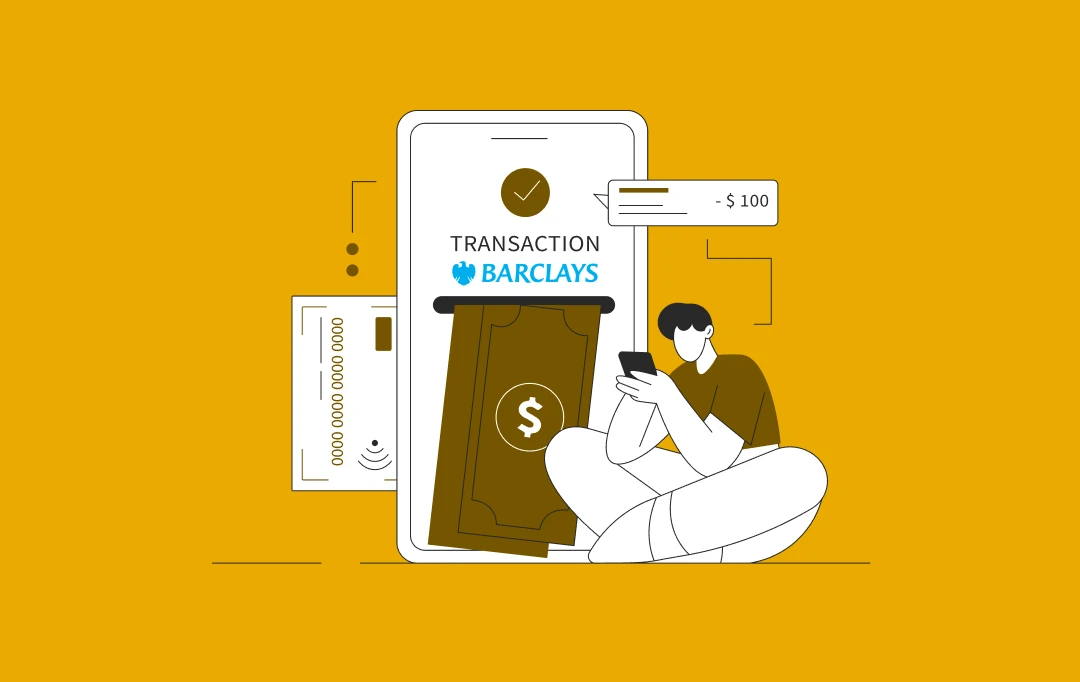
How Much Does It Cost to Build a Banking App like Barclays?
Key takeaways: Barclays sets the bar: Its speed, security, and money management tools show what EU users expect from modern banking apps. Costs vary a lot: A basic, compliant app can start around $40,000 (≈€30,000), while a feature-rich build can reach $400,000+ or more (≈€298,000+). Rules add real work: Meeting PSD2, GDPR, and instant payment…
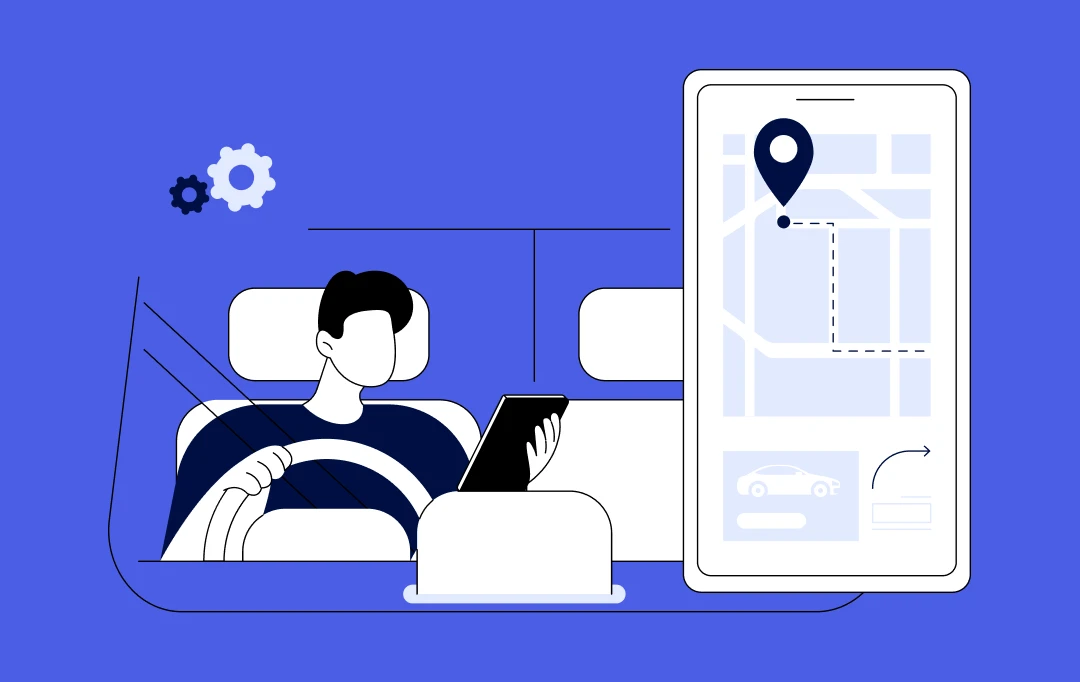
How Much Does It Cost to Build a Route Planning App Like Komoot
Europe doesn’t just love the outdoors- it thrives on it. From the Alps to Amsterdam’s bike lanes, cycling and hiking fuel an industry worth $53.3 billion in 2024, projected to grow at nearly 11% CAGR through 2033, as reported by GrandViewResearch. And leading this charge is Komoot, the route-planning app trusted by 40+ million users.…
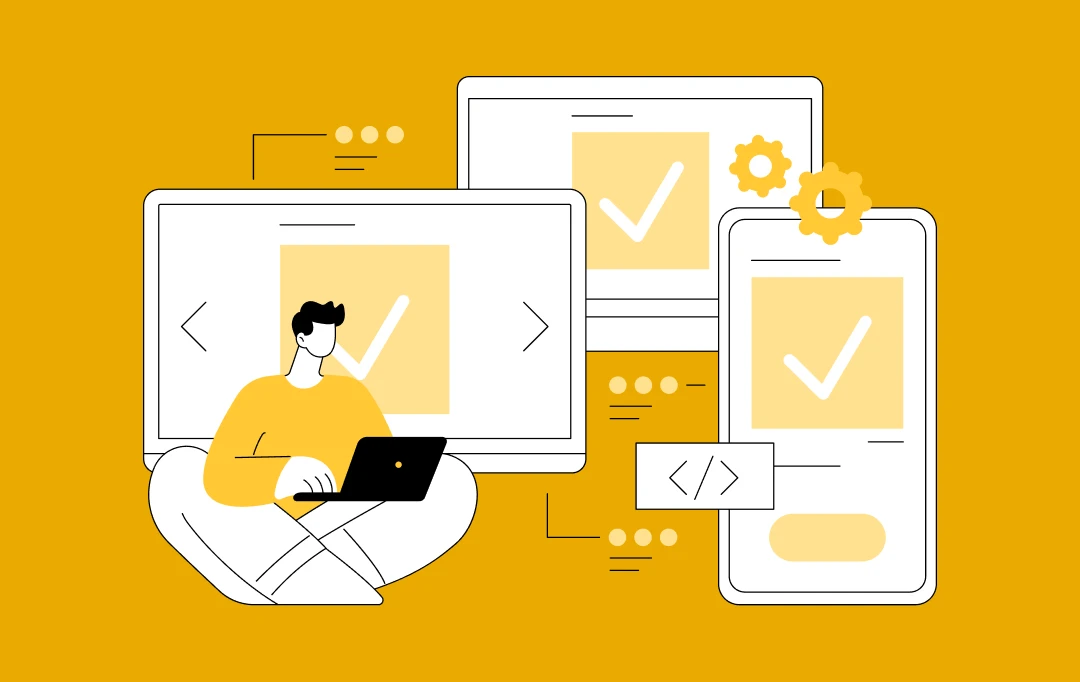
How Much Does It Cost to Build an App in Egypt?
Key takeaways: The cost to build an app in Egypt starts at 1,485,000 EGP for an MVP and can scale beyond 29,700,000 EGP for enterprise solutions, complexity being the biggest driver. The cost of mobile app development in Egypt is shaped by multiple factors: tech stack, UI/UX depth, backend infrastructure, integrations, and compliance needs. Viewing…
